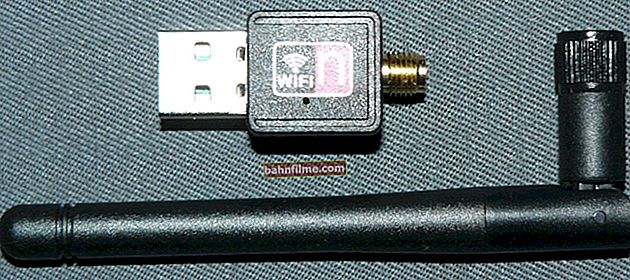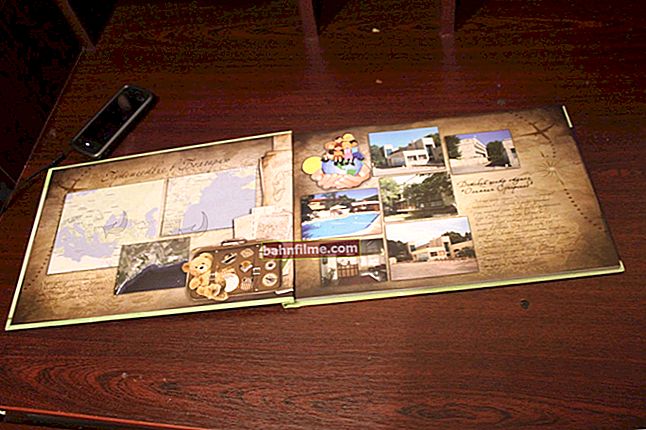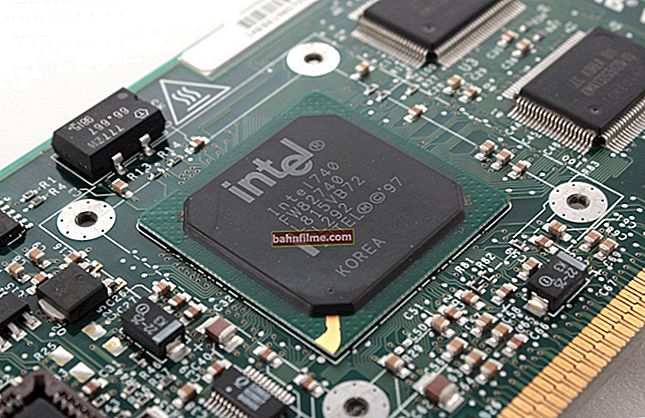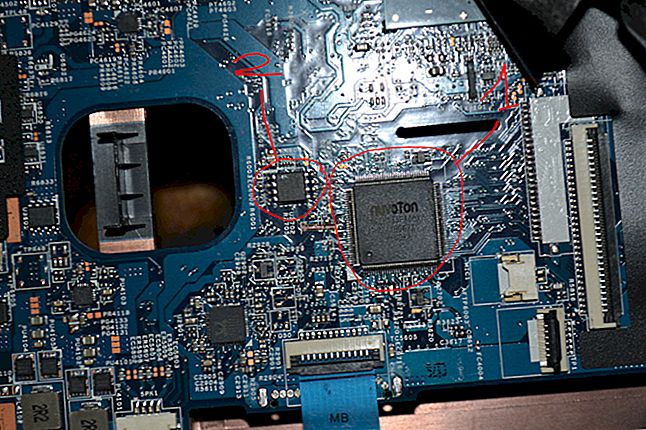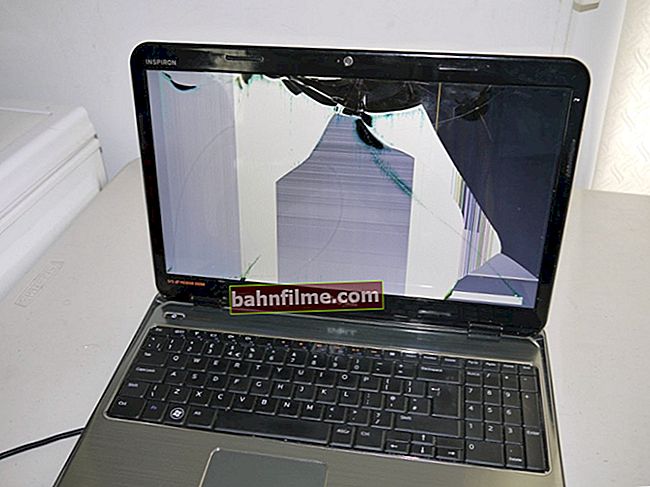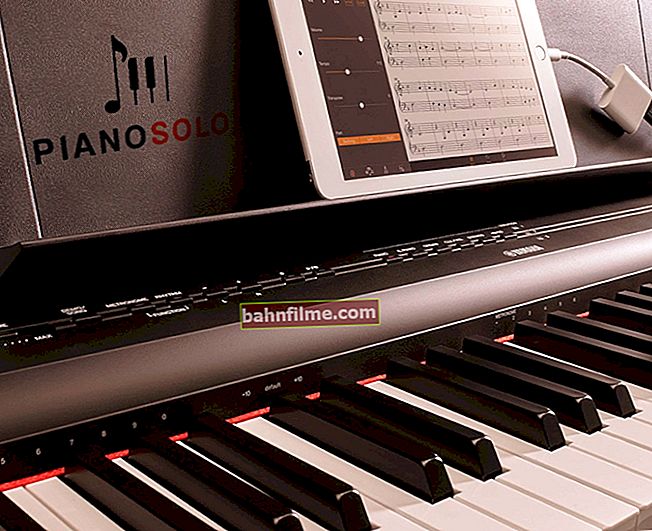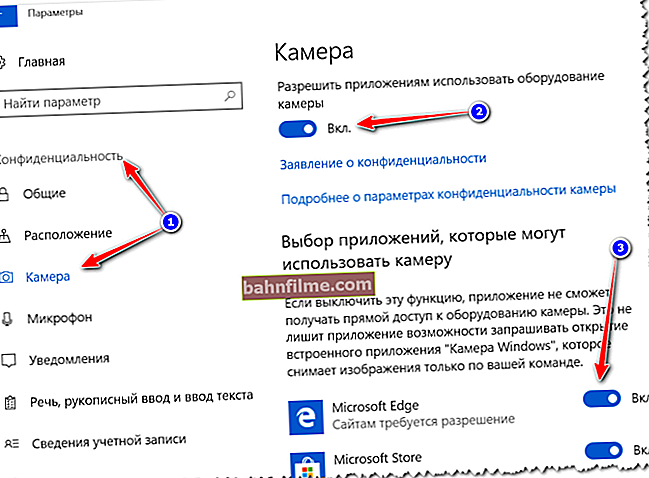 Good day to all.
Good day to all.
When installing Windows (for example), it is very often necessary to select a bootable media other than the hard drive. This can be done in two ways:
1) Go to the BIOS and change the boot queue (i.e. put the USB flash drive in the boot queue in front of the HDD - this way the PC will first check the USB flash drive for boot records, and only then the hard drive);
2) Call the Boot Menu and select a specific media to boot at the moment. In my opinion, this option is even better than the first one: it's faster and you don't need to go back and forth in the BIOS to change the boot queue.
To enter BIOS (call Boot Menu) in most cases, the keys are used: F2, Del, Esc, F12 (depending on the manufacturer of the device). You need to press the button immediately after turning on the computer (you can several times so as not to miss the right moment.
By the way, if you look closely at the first screen, which is visible immediately after turning on the computer, then a button is often written on it to enter the desired settings (call the menu). An example is shown below.

Fig. 1. Dual Bios. DEL button - enter BIOS settings, F12 button - Call the Boot Menu.
Table 1: hotkeys for computers
To use the table - you need to know which motherboard you have, the BIOS version. You can find out in several ways, I will give the fastest:
- use the documentation that came with your PC / laptop (if it still exists
 );
); - use some specials. utility for determining the characteristics of the computer. Would recommend Speccy ...
Speccy
Official website: //www.piriform.com/speccy

A simple free program that will tell you a lot about your hardware. For example, you can find out information about: processor (CPU), RAM (Ram), motherboard (Motherboard), video card (Graphics), HDD drives, SSD (Storage), etc. In addition, you can find out and control the temperature online main components: hard drive, video card, processor.
A screenshot of the operation of this utility is shown in Fig. 2.

Fig. 2. Speccy - getting information about the motherboard
Table 1
| Motherboard | BIOS version | Hotkey | Which menu will be open |
|---|---|---|---|
| Acer | Del | Enter Setup | |
| F12 | Boot Menu | ||
| ASRock | AMI | F2 or DEL | run Setup |
| F6 | Instant Flash | ||
| F11 | Boot Menu | ||
| TAB | switch Screen | ||
| Asus | Phoenix-Award | DEL | BIOS Setup |
| TAB | Display BIOS POST Message | ||
| F8 | Boot Menu | ||
| Alt + F2 | Asus EZ Flash 2 | ||
| F4 | Asus Core Unlocker | ||
| BioStar | Phoenix-Award | F8 | Enable System Configuration |
| F9 | Select Booting Device after POST | ||
| DEL | Enter SETUP | ||
| ChainTech | Award | DEL | Enter SETUP |
| ALT + F2 | Enter AWDFLASH | ||
| ECS (EliteGrour) | AMI | DEL | Enter SETUP |
| F11 | BBS POPUP | ||
| FoxConn (WinFast) | TAB | POST Screen | |
| DEL | SETUP | ||
| ESC | Boot Menu | ||
| GigaByte | Award | ESC | Skip memory test |
| DEL | Enter SETUP / Q-Flash | ||
| F9 | Xpress Recovery Xpress Recovery 2 | ||
| F12 | Boot Menu | ||
| Intel | AMI | F2 | Enter SETUP |
Table number 2: hot keys (Bios / Boot Menu, etc.) for laptops
Note: on modern laptops, the key combination in Windows also works: hold down the SHIFT button + select the restart button with the mouse.
Boot Menu is a small window in which using the mouse (arrows on the keyboard) you can select the device from which to boot. An example of such a menu is shown in Fig. 3.
Depending on the manufacturer of your device - the menu may differ slightly, but the principle of operation is the same everywhere  .
.

Fig. 3. Classic Boot Menu (Toshiba Laptop)
Table 2
| Laptop manufacturer | BIOS version | Hotkey | Function / menu call |
|---|---|---|---|
| Acer | Phoenix | F2 | Enter Setup |
| F12 | Boot Menu (Change Boot Device, Multi Boot Selection Menu) | ||
| Alt + F10 | D2D Recovery (disk-to-disk system recovery) | ||
| Asus | AMI | F2 | Enter Setup |
| ESC | Popup Menu | ||
| F4 | Easy Flash | ||
| Phoenix-Award | DEL | BIOS Setup | |
| F8 | Boot Menu | ||
| Benq | Phoenix | F2 | BIOS Setup |
| Dell | Phoenix, Aptio | F2 | Setup |
| F12 | Boot Menu | ||
| eMachines (Acer) | Phoenix | F12 | Boot Menu |
| Fujitsu Siemens | AMI | F2 | BIOS Setup |
| F12 | Boot Menu | ||
| Gateway (Acer) | Phoenix | Click mouse or Enter | Menu |
| F2 | BIOS Settings | ||
| F10 | Boot Menu | ||
| F12 | PXE Boot | ||
| HP (Hewlett-Packard) / Compaq | Insyde | ESC | Startup Menu |
| F1 | System Information | ||
| F2 | System Diagnostics | ||
| F9 | Boot Device Options | ||
| F10 | BIOS Setup | ||
| F11 | System Recovery | ||
| Enter | Continue Startup | ||
| Next | F1 | Boot-Menu Call | |
| F2 | BIOS setup | ||
| Lenovo (IBM) | Phoenix SecureCore Tiano | F2 | Setup |
| F12 | MultiBoot Menu | ||
| MSI (Micro Star) | *** | DEL | Setup |
| F11 | Boot Menu | ||
| TAB | Show POST screen | ||
| F3 | Recovery | ||
| Packard Bell (Acer) | Phoenix | F2 | Setup |
| F12 | Boot Menu | ||
| Toshiba | Phoenix | Esc, F1, F2 | Enter Setup |
| Toshiba Satellite A300 | F12 | Bios |
Table 3: recovery from a hidden partition (for laptops)
Most modern laptops have a special hidden partition with the ability to restore Windows using a "pair" of keys (no need to prepare a bootable USB flash drive, download ISO images from Windows, etc.).
As a rule, to start the recovery function - after turning on the laptop, it is enough to press one key (F9, for example, on Asus laptops). Next, a window will appear in which you need to follow the instructions of the recovery wizard.
Note: when restoring information, the system drive "C: \" is often formatted and all information is deleted from it. Make a copy of important data from it in advance.

Fig. 4. ACER Laptop - Recovery Service Utility
Table 3
| Laptop manufacturer | Combination of buttons | Note |
|---|---|---|
| Acer | Alt + F10 | First you need to enter the laptop Bios, and enable the D2D Recovery function. In the recovery system, by default, the password is set to 000000 or AIM1R8. |
| Asus | F9 | |
| Dell Inspiron | Ctrl + F11 | |
| Fujitsu Siemens | F8 | |
| HP | F10, F11 | |
| Lg | F11 | |
| Lenovo ThinkPad | F11 | |
| MSI | F3 | |
| Packard bell | F10 | |
| RoverBook | Alt | |
| Samsung | F4 | |
| Sony VAIO | F10 | |
| Toshiba | F8, F11 |
PS
The tables will be replenished (over time  ). For additions on the topic of the article - a big merci in advance. Good luck to all!
). For additions on the topic of the article - a big merci in advance. Good luck to all!
 );
);